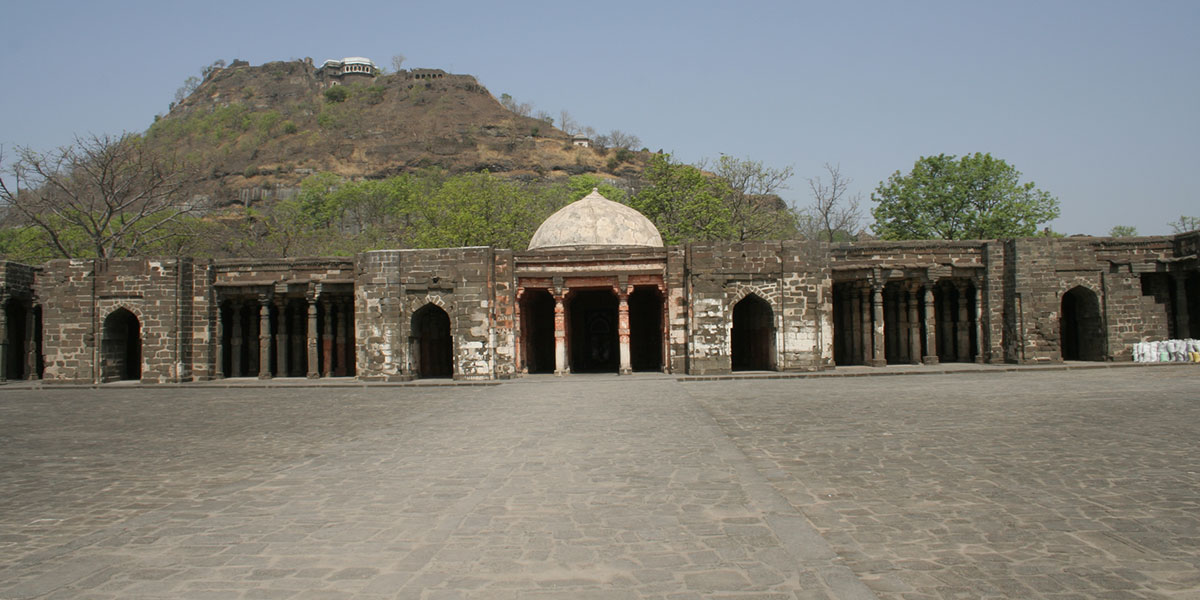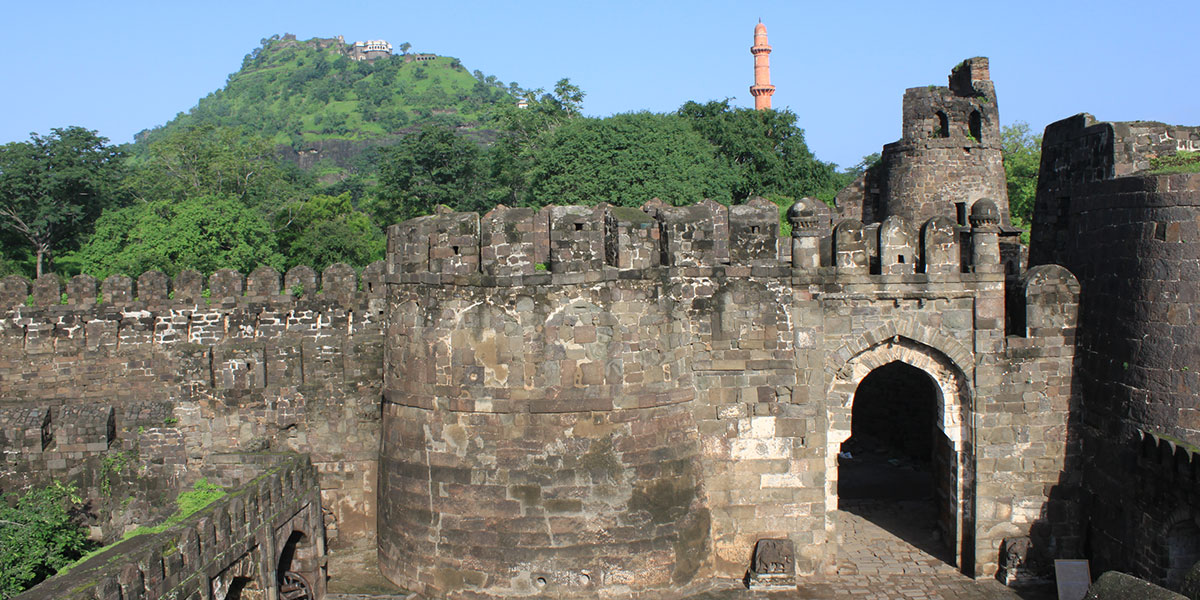Daulatabad fort and monument therein (e.g. Chand Minar)
Daulatabad was founded by the Yadavas of Deogiri (The Hill of Gods) in 11th century A.D. under king Bhillama V, until A.D. 1296 when Ala-ud-din Khilji defeated Ramachandradeva, son of Krishna and held sway over it by forcibly reducing Ramachandradeva as his vassal. Later, Malik Kafur led his armies in A.D. 1306-07 and 1312 against the recalcitrant Ramachandradeva and his son Shankardeva successively, subdued them and killed the latter. Malik Kafur placed Harpaladeva on the throne who later declared his independence. Qutb-ud-din Mubarak Shah Khilji made a successful campaign against Deogiri and annexed the same to the Delhi Sultanate. Muhammad-bin-Tughluq, who succeeded the Khiljis at Delhi renamed Deogiri as Daulatabad (Abode of Wealth) and got the capital shifted from Delhi to Daulatabad in A.D. 1328. But for various reasons he re-transferred his capital back to Delhi. By quick succession of political events, the area was wrestled from the Imperial authority and the Bahmani rulers under Hasan Gangu extended his control over Daulatabad as well. By 1499 the Nizam Shahis of Ahmednagar not only captured but also made Daulatabad as their capital in A.D. 1607. The subsequent period witnessed a series of wars between the Deccan Sultans and the Mughals under Akbar and Shah Jahan. In 1633 A.D. Daulatabad was finally captured after a prolonged siege of four months. It was during this time Aurangzeb was placed as viceroy of Deccan who led his campaigns against Bijapur and Golconda from Daulatabad. For a short period Daulatabad was under the control of the Marathas before the Nizams of Hyderabad took control of it in 1724 A.D. Built on a 200 meter high conical hill, Daulatabad was one of the most powerful forts of the medieval Deccan. The defense system consists of two moats and three encircling fortification walls with lofty gates and bastions at regular intervals known as Kalkot, Mahakot and Amberkot. The entire fort complex together with all the fortification walls consists of an area measuring approximately 94.83 hectares. The fort was enlarged and structures were added subsequently as the fort passed on from one hand to the other and from one dynasty to another. Today the Daulatabad Fort, besides the moat and fortification walls consists of structures like stepped wells (baolis), kacheri (court) building, Bharat Mata Temple (temple dedicated to Mother India), Hathi (Elephant) tank, Chand Minar, Aam Khas building (Hall of Public Audience), Royal Hammam, Chini Mahal, Rang Mahal, Baradari on the hill top, water cisterns, rock cut structure and Andheri (the Dark Passage). The 10 unfinished rock cut caves formed to the south of Rangmahal belong to the Yadava period.









